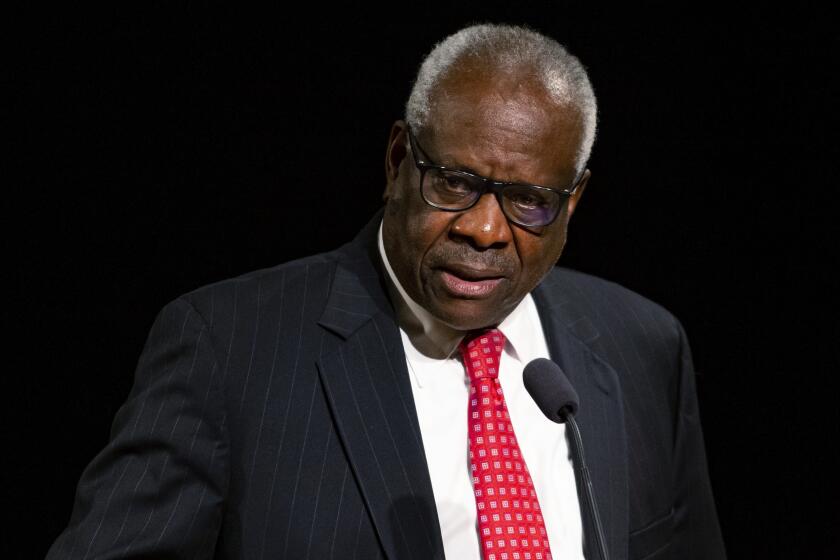Economic Indicators Drop, Signaling Slow Growth in Second Half
WASHINGTON — The government’s index of leading economic indicators dropped 0.2% in April, the Commerce Department reported Thursday, prompting several private forecasters to predict a continued slow-moving economy.
“The index is suggestive of sluggish economic growth in the second half of the year but not a recession,” said Allen Sinai, chief economist for Shearson Lehman Bros. “So far, the lower interest rates and weaker dollar (in international trade) have not brought a significant revival in goods-producing America. That revival appears to be many months away.”
In agreement were Jerry Jasinowski, chief economist for the National Assn. of Manufacturers, and Martin Morrow, senior economist for Merrill Lynch.
Consumer Spending Up
Commerce Secretary Malcolm Baldrige said he was disappointed by the data but added that consumer spending is on the rise and should accelerate even more as the government clears up problems that delayed federal tax refunds by several weeks this year.
“These developments will be bolstered by recent declines in interest rates, leading to stronger growth through the rest of the year,” Baldrige said in a statement.
In another economic report, the Census Bureau said that sales of new houses dropped 11.9% in April--the biggest decline in more than a year--and the average cost of a new house reached a record $105,800.
Despite the falloff, sales are stronger than many forecasters had expected, with mortgage rates still high and the economy weak.
The estimated 0.2% decline last month in economic indicators--placing the index at 167.4 (with a 1967 base of 100)--may be revised when more complete data comes in.
Originally, the Commerce Department had estimated that the economic index decreased 0.2% in March also--apparently the first drop of the year--but it said Thursday that there was actually an increase of 0.1% in March. In addition, the estimated 0.7% increase in February was actually only 0.5%, the department said.
Weakness in Most Categories
The April indicators showed weakness in most of the major categories, particularly in manufacturing.
“The most ominous element of the (index’s) decline” in April, Jasinowski said, “is the fall in new orders for capital equipment, indicating that business investment spending will not be sufficient to compensate for weak consumer activity.
“In view of other signs pointing toward sluggish economic activity, the April decline suggests that the second and probably third quarters will show slow economic growth.”
Interest rates have been driven lower in recent weeks, first by reduced demand for credit as businesses scaled back their activity and then by the Federal Reserve’s lowering of its discount rate in an effort to stimulate an economy that grew at an annual rate of only 0.7% in the first quarter.
“Lower interest rates will have some immediate impact, particularly in the housing sector, but the effect of lower rates will not likely filter through to the rest of the economy for several months,” Morrow said. “For the manufacturing sector, lower interest rates will help, but what is needed is weakening in the dollar” so that American products will be more competitive with foreign-made goods.
“But that’s going to be a way off,” he added.
In order of their impact, the negative factors in the April index were contracts and orders for plant and equipment, money supply, vendor performance, average workweek, building permits and net business formation.
The four indicators making positive contributions to the composite index were new orders for consumer goods and materials, change in sensitive materials’ prices, stock prices and average weekly initial claims for state unemployment insurance.
More to Read
Inside the business of entertainment
The Wide Shot brings you news, analysis and insights on everything from streaming wars to production — and what it all means for the future.
You may occasionally receive promotional content from the Los Angeles Times.










